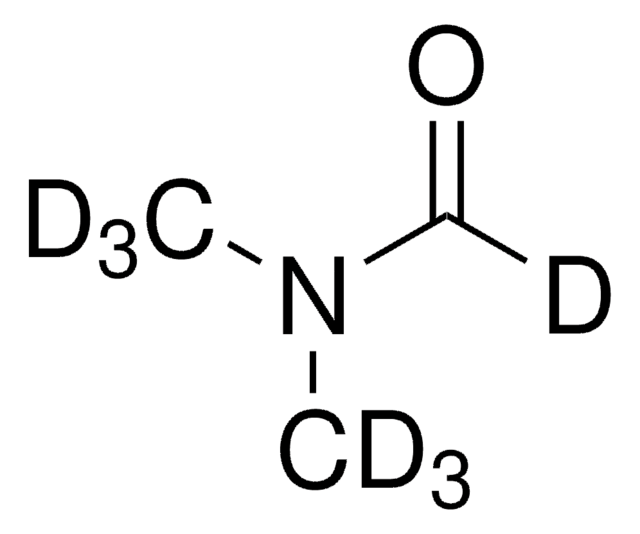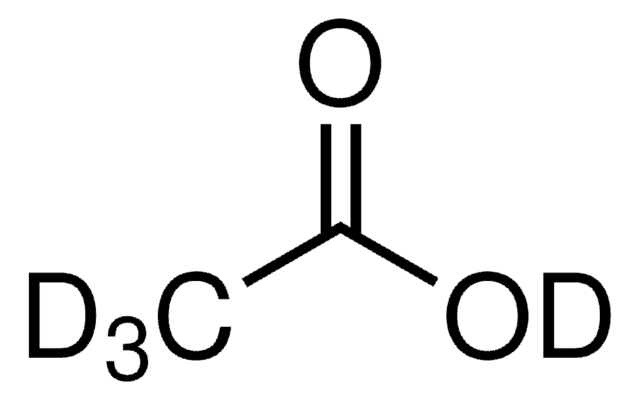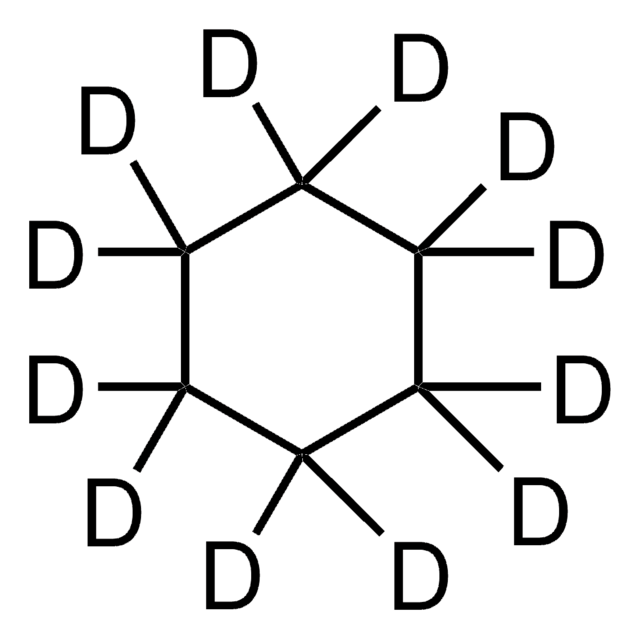All Photos(1)
About This Item
Linear Formula:
DCON(CH3)2
CAS Number:
Molecular Weight:
74.10
MDL number:
UNSPSC Code:
12352005
PubChem Substance ID:
NACRES:
NA.12
Recommended Products
isotopic purity
98 atom % D
Quality Level
Assay
99% (CP)
form
liquid
refractive index
n20/D 1.427 (lit.)
bp
153 °C (lit.)
mp
-61 °C (lit.)
density
0.957 g/mL at 25 °C
mass shift
M+1
SMILES string
[2H]C(=O)N(C)C
InChI
1S/C3H7NO/c1-4(2)3-5/h3H,1-2H3/i3D
InChI key
ZMXDDKWLCZADIW-WFVSFCRTSA-N
Related Categories
Packaging
This product may be available from bulk stock and can be packaged on demand. For information on pricing, availability and packaging, please contact Stable Isotopes Customer Service.
Signal Word
Danger
Hazard Statements
Precautionary Statements
Hazard Classifications
Acute Tox. 4 Dermal - Acute Tox. 4 Inhalation - Eye Irrit. 2 - Flam. Liq. 3 - Repr. 1B
Storage Class Code
3 - Flammable liquids
WGK
WGK 2
Flash Point(F)
140.0 °F - closed cup
Flash Point(C)
60 °C - closed cup
Choose from one of the most recent versions:
Already Own This Product?
Find documentation for the products that you have recently purchased in the Document Library.
Journal of Labelled Compounds & Radiopharmaceuticals, 34, 263-263 (1994)
Claudia Orelio et al.
Haematologica, 94(3), 409-413 (2009-02-13)
Shwachman-Diamond syndrome is a hereditary disorder characterized by pancreatic insufficiency and bone marrow failure. Most Shwachman-Diamond syndrome patients have mutations in the SBDS gene located at chromosome 7 and suffer from recurrent infections, due to neutropenia in combination with impaired
Bart R B Haverkorn van Rijsewijk et al.
Molecular systems biology, 7, 477-477 (2011-04-01)
Despite our increasing topological knowledge on regulation networks in model bacteria, it is largely unknown which of the many co-occurring regulatory events actually control metabolic function and the distribution of intracellular fluxes. Here, we unravel condition-dependent transcriptional control of Escherichia
Our team of scientists has experience in all areas of research including Life Science, Material Science, Chemical Synthesis, Chromatography, Analytical and many others.
Contact Technical Service









